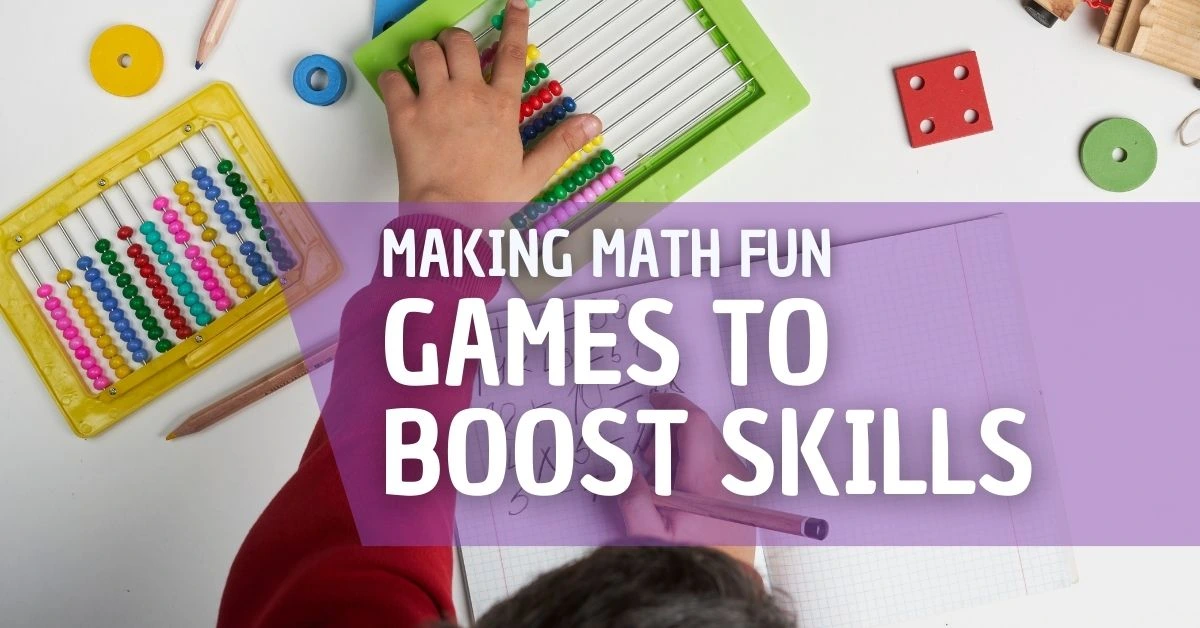Math doesn’t have to be a dreaded subject, especially when it’s taught in a fun and engaging way. For homeschooling parents, making math enjoyable can be a game-changer in their educational approach. Interactive learning not only boosts math skills but also fosters a love for numbers and problem-solving. In this blog post, we’ll explore various strategies and activities that can make math lessons exciting and effective for your child. By the end, you’ll have a toolkit filled with games, DIY projects, and tech resources to create memorable math moments at home.
The Challenge Of Math Homeschooling
Homeschooling presents its own unique set of challenges, especially when it comes to teaching subjects like math. Many parents struggle with keeping lessons engaging and ensuring their children understand core concepts. Math can sometimes seem abstract and disconnected from daily life, making it difficult for children to see its relevance. This can lead to frustration for both the parent and the child. Overcoming these hurdles requires a shift in perspective—seeing math not just as numbers and equations but as an opportunity for creativity and exploration. Creating a fun homeschool math curriculum is essential. By incorporating interactive elements into lessons, parents can capture their child’s interest and make the learning process more dynamic. This approach not only aids in understanding but also helps children develop critical thinking skills.
Making math fun isn’t just beneficial for the child; it also makes teaching more enjoyable for parents. When you see your child’s eyes light up with understanding, the joy is contagious. One of the most effective ways to tackle these challenges is through hands-on learning. Engaging with math through games and activities allows children to experiment and learn at their own pace. By turning lessons into play, parents can help children build confidence in their abilities and instill a lasting appreciation for math.
Interactive Games, DIY Activities, & Incorporating Technology
Interactive games are an excellent way to make math engaging. They combine learning with play, allowing children to absorb concepts without realizing they’re studying. Whether digital or analog, games provide a dynamic environment for math exploration. One popular option is “Math Bingo,” which uses bingo cards filled with math problems. Children solve equations to mark spots, turning problem-solving into a competitive game. Another great game is “Sum Swamp,” which focuses on addition and subtraction within a board game format. Children roll dice to move through a swamp, solving math equations along the way. This interactive approach helps reinforce basic arithmetic skills while keeping the game light and fun. Digital games like “Prodigy Math” offer an online platform where children can tackle math challenges in a fantasy world setting, earning rewards and advancing levels as they progress. For parents looking for more options, websites like Coolmath Games offer a wide range of free math games tailored to different age groups and skill levels. These games encourage strategic thinking and problem-solving in a playful setting. By incorporating these interactive games into your math curriculum, you can create a lively learning atmosphere that motivates children to engage with math concepts.
DIY math activities provide a hands-on approach that can solidify understanding and make learning more tangible. Using everyday items, parents can create activities that reinforce math concepts in a practical manner. One simple activity involves using measuring cups and water to teach fractions. By filling and pouring different quantities, children gain a concrete understanding of fractions and volume. Another DIY project is the “Math Scavenger Hunt,” where children search for items around the house that match certain mathematical criteria, such as shapes or measurements. This activity encourages children to apply math concepts to their surroundings, making learning more contextual and meaningful.
Using crafts can also be an effective teaching tool. For example, creating a “Geometry Art Project” with paper shapes helps children understand geometric concepts. They can explore symmetry, angles, and properties of shapes while expressing their creativity. These DIY activities not only make math fun but also nurture curiosity and innovation.
In today’s digital age, technology offers endless possibilities for enhancing math education. Educational apps and online resources provide interactive and personalized learning experiences. Apps like “Khan Academy” and “IXL” offer comprehensive math lessons that adapt to the child’s pace and level, providing instant feedback and progress tracking. For younger children, apps like “Moose Math” introduce basic concepts through colorful and engaging activities. These apps make learning accessible and enjoyable, offering a variety of exercises that cover different math areas.
Parents can also utilize platforms like “YouTube,” where math educators share creative tutorials and lessons that can supplement homeschooling efforts. Integrating technology into your math curriculum not only keeps lessons current but also helps children become tech-savvy. It provides access to a wealth of resources and learning opportunities that can enhance understanding and offer diverse approaches to problem-solving.
Real-World Applications & Tracking Progress
Connecting math concepts to real-world scenarios helps children understand the practical value of what they’re learning. Integrating math into everyday activities makes lessons more relevant and easier to grasp. For example, cooking is a fantastic way to teach measurements, fractions, and ratios. Involve your child in cooking or baking by having them measure ingredients, which reinforces these concepts in a fun and tasty way. Shopping trips also present opportunities for applied math. Encourage your child to calculate totals, compare prices, or manage a budget. These tasks develop important skills like addition, subtraction, and percentage calculations in a real-world setting. Creating a family budget together can also teach valuable lessons in financial literacy and responsibility. By demonstrating how math is used in daily life, children see its importance beyond the classroom. This connection fosters an appreciation for math as a useful tool, not just an academic subject.

Monitoring your child’s progress in math is crucial for identifying strengths and areas that need improvement. It also provides an opportunity to celebrate achievements, boosting confidence and motivation. Use a combination of assessments and informal observations to gauge understanding and skill development. Keep track of your child’s progress by maintaining a portfolio of completed work, such as worksheets, projects, and assessments. Regularly review this work together to discuss achievements and set new goals. Consider using tracking tools like progress charts or journals, where children can reflect on their learning and document milestones.
Celebrating successes, both big and small, encourages a positive attitude towards math. Acknowledge achievements with rewards or recognition, such as certificates or a special treat. By creating a supportive environment that values progress, you help your child develop a growth mindset and a love for learning.
Fostering A Lifelong Love Of Learning
Making math fun is not just a strategy; it’s a necessity for fostering a lifelong love of learning. By incorporating interactive games, DIY activities, technology, and real-world applications into your math curriculum, you can transform the way your child experiences math. These approaches not only improve understanding but also make learning a joyful and rewarding experience. Remember, the goal is to create “making math moments” that spark curiosity and engagement. Each interactive element builds a stronger connection to math, empowering your child to explore and excel.
For homeschooling parents, this approach not only enhances education but also strengthens the bond between parent and child as they learn and discover together. Encourage your child to explore the suggested games and activities, and watch as their confidence and skills grow. Your support and involvement are key to their success, making math a magical part of their everyday life.





